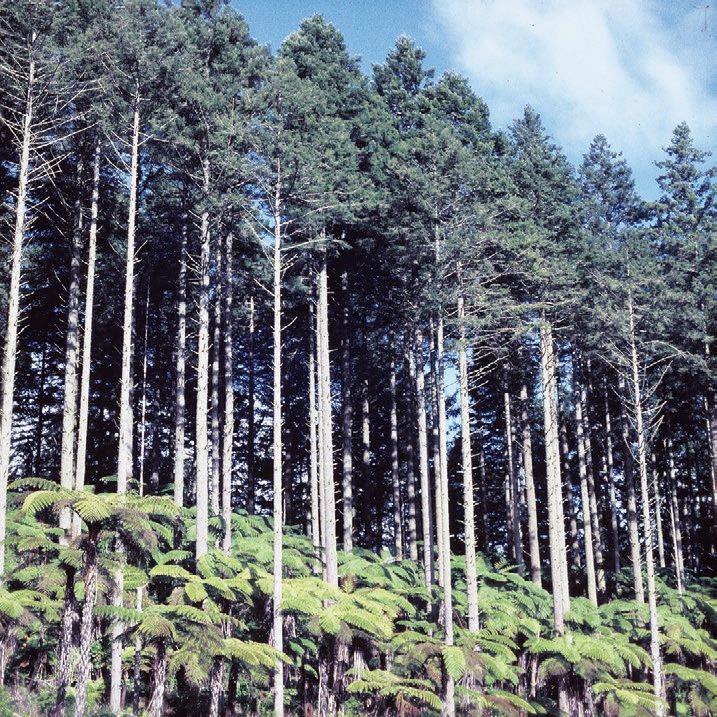How does Douglas fir compare with radiata pine in framing timber?
Mick Hedley, Dave Page, Jackie van der Waals, New Zealand Tree Grower August 2009.
Douglas fir, which comprises around six per cent of the New Zealand exotic timber plantation, has been used as untreated framing timber for over 70 years.
Historically, there were no restrictions on its use within the framework of domestic buildings. That changed following the leaky building crisis and the resulting change in the Building Code. The revised Building Code significantly restricts the use of untreated radiata pine and Douglas fir in domestic buildings, making no allowance for differences between the species.
The suppliers of Douglas fir argue that Douglas fir is more resistant to moisture uptake, more durable, and is stronger and stiffer than radiata pine. This distinction implies that even if Douglas fir framing became decayed it would still retain greater stiffness than un-decayed radiata pine. It has been previously shown that Douglas-fir is more resistant to rain wetting. However, until now, there has been no comparative information on rates of decay of radiata pine and Douglas fir and the effect on loss of stiffness.
The experiment
Scion was contracted by the Douglas fir Cooperative to design and run an experiment to allow a comparison of any differences in the loss of stiffness between radiata pine and Douglas fir. The experiment found that some decay in untreated Douglas fir does not cause the same amount of stiffness loss as it does in untreated radiata pine. Therefore radiata pine and Douglas fir should not be considered equivalent framing options in the Building Code with respect to durability.
Measuring decay
The experiment carried out by Scion was designed to measure the stiffness and assess decay in radiata pine and Douglas fir exposed to identical conditions. This allowed a direct comparison to be made between radiata pine and Douglas fir performance.

Samples of framing size timber from preservative-treated radiata pine, untreated radiata pine and untreated Douglas fir were pre-inoculated with Oligoporus placenta, a brown rot decay fungus common in leaky homes. Loss of stiffness was measured and recorded for each sample over a three year period.
Treated radiata pine sapwood, showing no decay, had the least loss of stiffness with first loss measured after 106 weeks. Untreated Douglas fir heartwood first loss of stiffness was also only measured after 106 weeks, despite the presence of some decay. Untreated Douglas fir sapwood first loss of stiffness was measured at 65 weeks with more established decay. Untreated radiata pine heartwood first loss of stiffness was measured at 48 weeks with deeply established decay. Untreated radiata pine sapwood first loss of stiffness was measured at 24 weeks also with deeply established decay.
Structural integrity
These results indicate that, for untreated Douglas fir in particular, the presence of observable decay, the main criterion for replacement of framing when a leaky building is rehabilitated, may not reflect residual stiffness. When leaks are rectified and the framing dried the structural integrity of Douglas fir would be retained.
Mick Hedley, Dave Page and Jackie van der Waals work for Scion

 Farm Forestry New Zealand
Farm Forestry New Zealand